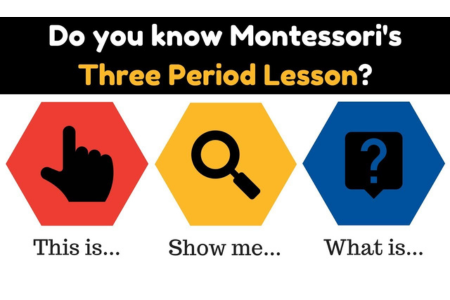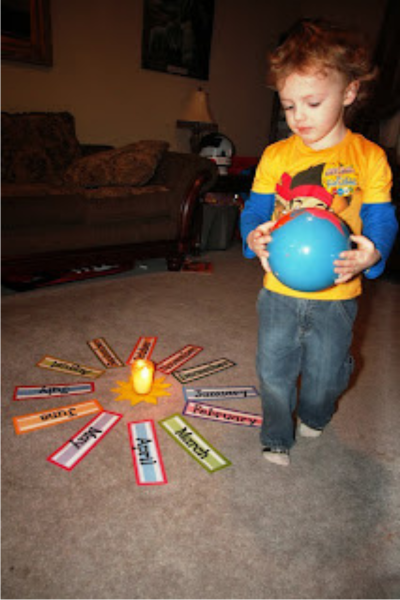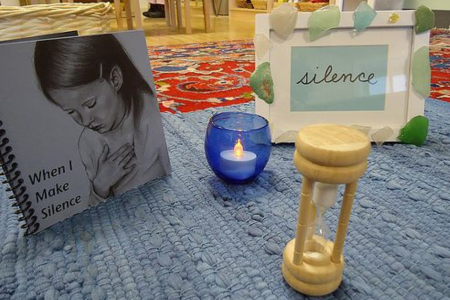Montessori programme

The Montessori pre-primary is called the Children’s House (Italian – Casa dei Bambini) as everything within it is designed, prepared and laid out to allow the child to feel safe, comfortable and independent. It is a home away from home, set to the size, learning pace and interests of the young child’s mind.
Between this age a child is creating the foundations of their personality. The prepared environment is supporting the developments to master and perfect their abilities.
The Montessori environment is structured and organised around the key learning areas – exercise of practical life, Sensorial, Language, mathematics and culture -geography, history, biology, science, music, and the arts. A child learns through practical and real-life activities that support independence; material manipulation provides a realistic sensorial experience; and further explorations. This leads to refinement of their movements, sensory perceptions, language, the intellectual development and interactions in the environment. Children have the opportunities to follow to make choices within the structure, choose their own activities, develop their capacity for concentration, and engage at their own pace. Montessori materials and activities are self correcting to support learning and explorations.
The Montessori Work Cycle

The Montessori work cycle, also called the 3-hour cycle, is a key factor in the Montessori curriculum. It is a period of intense, absorbing, independent immersive work done by children. They have the freedom to choose what activity or activities they would like to work on based on their interests. It is also a time of self-guided learning that is not to be interrupted by the teacher, small-group, or individual lessons.
Typically, children enter the classroom and are greeted by a Montessori teacher. She will help children put away their shoe and find their class.
The class has a teacher sitting cross legged on the sitting mat. She is smiling and encouraging children to sit in a circle by bringing their own sitting mat and joining the circle. The circle tiem begins with good morning songs, calendar and weather for the day. Information on a theme ,descriptions, newsperiod and circle time games are played. We disengage from the circle through a silence game. The teacher taps each child to go and select an activity they would like to do. Incase an activity is already taken, the teachers encourages a similar or alternate activity for the child. The child are already practicing their independence and routine to follow.
After completing several of these familiar activities, the child often enters into a state of restlessness, which Montessori described as “false fatigue”.
During the state of false fatigue, while the child may appear to be tired and in need of rest, she is actually seeking and preparing to choose her most demanding work of the three-hour cycle. When students are allowed to independently work through their period of false fatigue, they often settle into their most challenging work, work that results in intense concentration and intellectual growth. Children frequently reflect on the work they have done with satisfaction rather than exhaustion.
The classroom provided snack break of 10mins. The helper will be seen taking children to the washroom and help them clean-up. This happens every 45minutes to help develop the routine.
The teacher will seen taking small groups of activities, storytelling and giving individual presentations planned in advance. The classroom will reflect a place of buzz with children engaged in activities, art work, music, social interactions or reading silently in the library.
By noon, children complete their lunch. They engage in setting up, eating and cleaning the lunch area. The day closed with songs and reflection on which part/activity did they enjoy the most. Children are helped to sit in a line for going out as an when their parents arrive.
Older children and adults may grow into two or more work cycles per day.

A three period lesson

The three-period lesson is a key method/techinque to introducing a new concept and vocabulary to children. In this method one can see the children gaining mastery from basic understanding.
The three steps, or periods, are:
- Naming (Introduction) “This is a/an _____.”
- Recognizing (Identification) “Show me the _____.”
- Remembering (Cognition) “What is this?“
“The purpose of the three-period lesson is to help the child to better understand…and to allow you to see how well the child is grasping and absorbing what you are showing him.” Elizabeth Hainstock

Birthday celebrations

The Montessori birthday celebration is a unique combination of celebrating life and learning opportunity. This celebration includes arranging props and material.
Prior to the celebration – The family/guardian of the child comes prepared with pictures of the child from birth to now. Like a child’s timeline of life till now.
On that day – Twelve months cards in order are placed around a candle/glowing led light representing the sun. The arrangement is done in the centre of the class. An earth globe in the child’s hand (whose birthday it is!). The rest of the class children sit around a perimeter.
The birthday walk can begin as the child starts rotation around the sun, to the next month and then the next, in the correct order. The number of rotations depends on the child’s age, e.g., three years equal to three rotations.
Each trip around the Sun is accompanied by the song that everyone sings. The song goes:
The Earth goes around the Sun (3 times)
And (name of the student) is one (then, two, three, etc.)
The child/teacher shares the picture of the timeline after each rotation.
Once the rotations uptil the child’s age is completed, the children sing “Happy birthday to you”
The birthday child is encouraged to say :thank-you” to his/her friends to celebrate his/her birthday.
Giving gifts are optional. Gifts are limited to constructive articles like books, craft material or healthy eats like fruits.

Silence game

The world we live is noisy and too overwhelming sometime. This can affect us in multiple ways especially emotionally and spiritually. The Silence Game can give children a precious gift that stays with them throughout their lives: the ability to cultivate and appreciate silence. Dr Montessori also believed that develop spiritual awareness.
The game starts with simple instructions to sit comfortably. Each instruction will have a level of sitting without moving a body part starting with the toes and slowly increasing the number of body parts till the face/eyes. Start with a minute and slowly scale it up. If the teacher sees restlessness, then the game is discontinued and tried at another time.
If you find that your children enjoy this game then you can use a bell to signal that the game is about to begin. Or make a card with the word ‘Silence’ on one side and a peaceful photograph on the other. It also helps develop control and self-discipline as children learn to stay still and be aware of what their bodies are doing.

Story telling in a Montessori classroom

“The true basis of the imagination is reality.”
The child between of 0 to 6 does not distinguish fantasy from reality. The mental faculty have not developed to know what real and what is not.
In the Montessori environment, children enjoy true stories of personal experiences, stories about their classmates and stories related to culture (geography, botany, zoology and history). Children between 3-6 are also capable of telling their own stories. Stories are said in circle time or in a reading area or as an outdoor seating. After your storytelling sessions, Montessori early childhood students can create art, retell stories they just heard, record stories, and create poems.
A silence reading area/library corner in the environment invites children to leaf through pages of pictures, character and behavior based books, stories of different places, countries and continents.

Art in Montessori classroom

Imagine yourself wanting to express your self through art. A shelve with colours, crayons, paints, art supplies, papers, scissors, gluestick, a few sample of art. Have your pick on what you would like to create from these. Maybe a colourful drawing or a collage of different colour papers. Take your work to a chowki or a table, work with it and then wind-up the activity to complete the work.
Art is a way for children to communicate their feelings. It is through art that children develop their fine motor skills. In the Montessori environment, we provide open-ended art activities that help children explore and use their creativity. When it comes to art, it is the process not the product that is important to the child.
In a Montessori classroom, children choose the art work and create them. There is immense satisfaction driven from their work. Children are also encouraged to draw from nature, be it a plant leaf or a cloudy sky.
The art work are woven into stories and songs.
